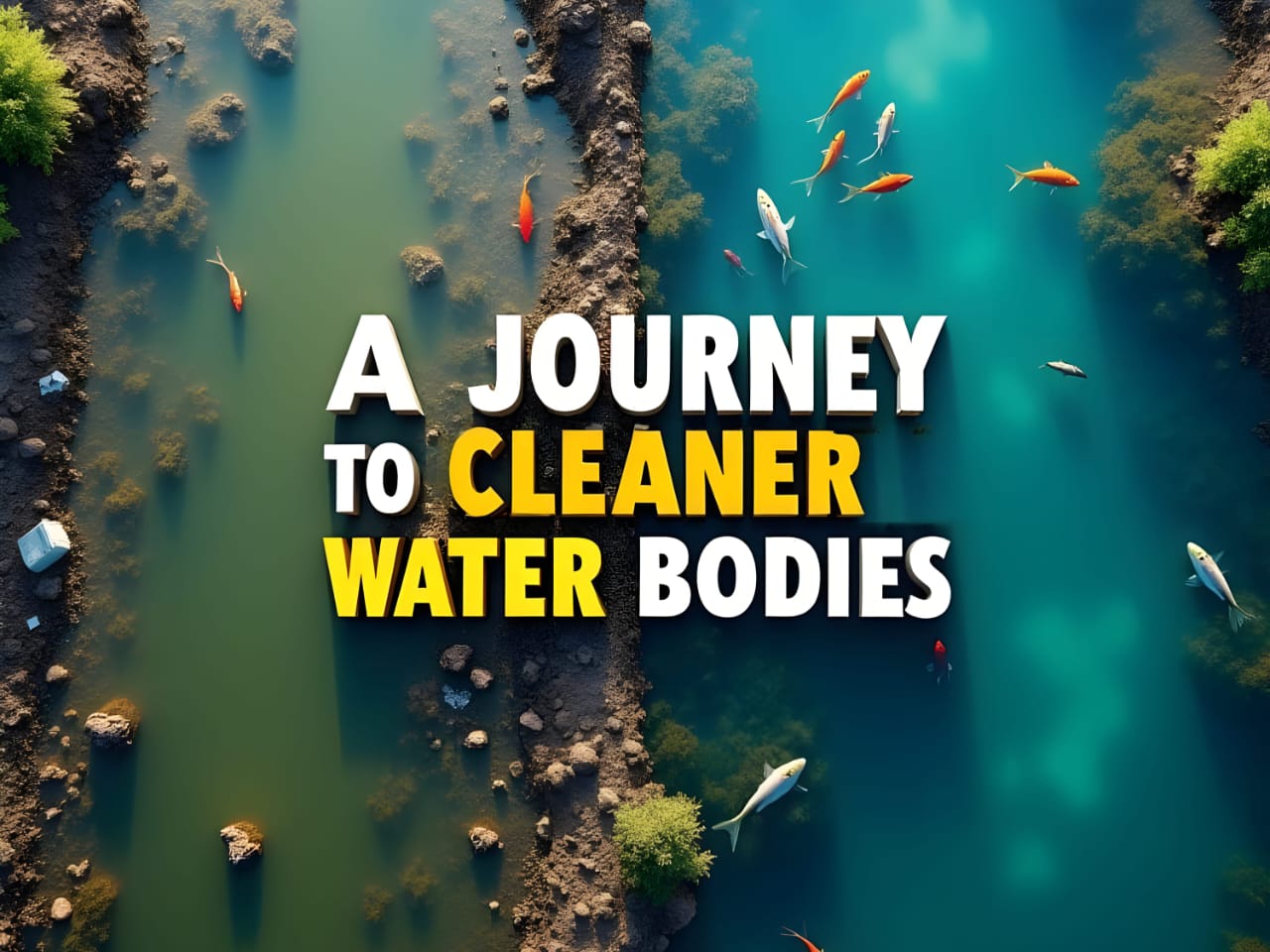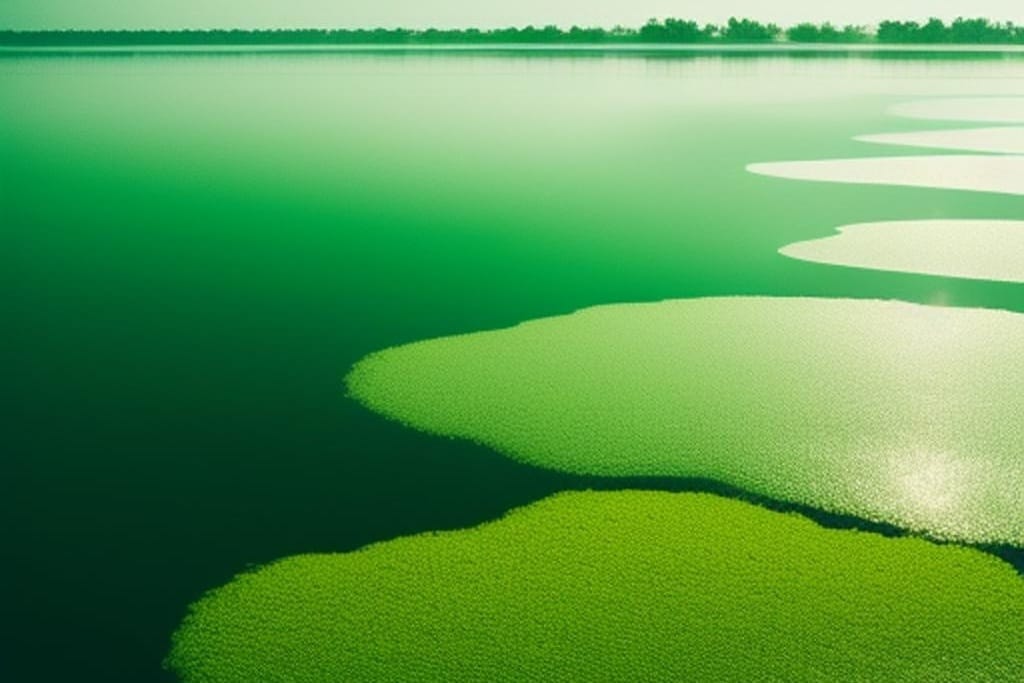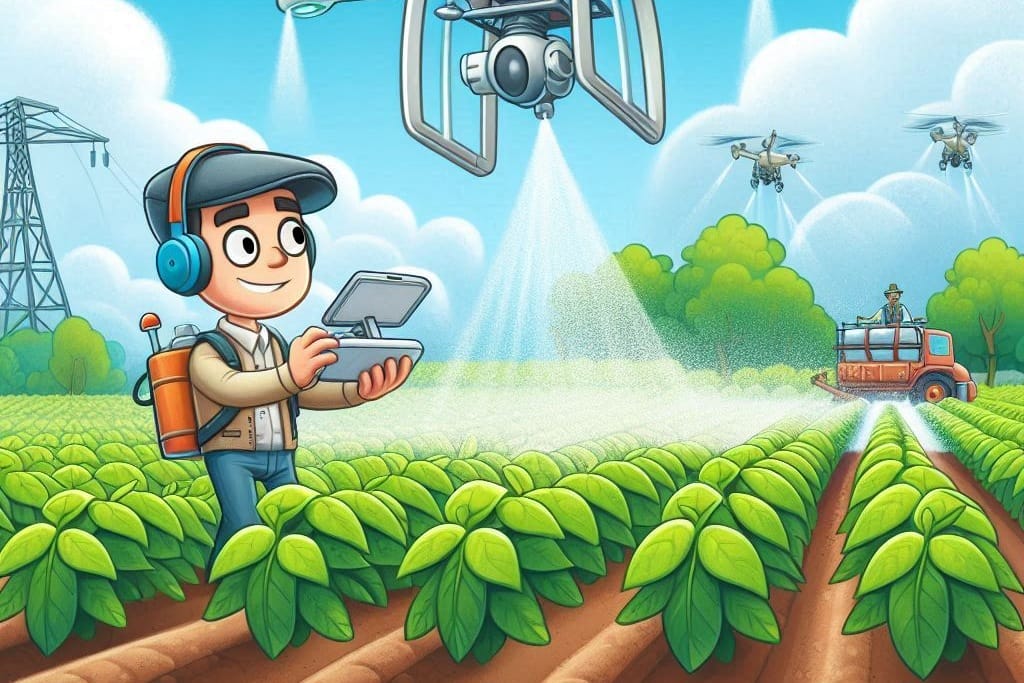
A truly undisputable matter of concern for ecologists and a critical environmental issue impacting aquatic ecosystems worldwide- Eutrophication. It has really become imperative to address the concerns regarding Eutrophication. This blog delves into the phenomenon of Eutrophication, exploring its definition, causes, locations, associated risks, and possible solutions. Additionally, this blog also examines the drawbacks of these solutions and considers future potential.
What is Eutrophication?
Eutrophication is the process through which water bodies become excessively enriched with nutrients: primarily with the elements nitrogen and phosphorus. This influx of nutrients leads to abnormal, accelerated algal growth, resulting in algal blooms that can severely disrupt, and potentially destroy, aquatic ecosystems. While some algae play a beneficial role in water bodies, excessive growth can have harmful effects on water quality and biodiversity.

How Does Eutrophication Occur?
Eutrophication can occur through both natural and human-induced processes. Natural eutrophication is a gradual process that occurs over centuries as lakes and ponds accumulate nutrients from their surroundings. In contrast, anthropogenic eutrophication- driven by human activities- has become a pressing concern.
Key contributors include:
- Agricultural Runoff: The use of fertilizers in farming introduces high levels of nitrogen and phosphorus into the soil, which can be washed into nearby water bodies during rainfall.
- Sewage and Wastewater Discharge: Inadequate treatment of wastewater can result in nutrient-rich effluents entering aquatic ecosystems.
- Industrial Effluents: Certain industries release nutrient-laden waste into water bodies, exacerbating the issue.

Where Does Eutrophication Typically Occur?
Eutrophication is most commonly observed in freshwater systems: lakes, rivers, and ponds. As a matter of fact, Shallow lakes are particularly more susceptible due to their limited capacity, and consequently less volume of water to dilute nutrients . Coastal marine environments also face eutrophication risks, especially in regions with heavy agricultural and urban runoff. Areas with intensive farming practices and insufficient wastewater treatment facilities are the most affected.
Risks Associated with Eutrophication
The implications of eutrophication are extensive and include:
1. Oxygen Depletion: Algal blooms can consume oxygen in the water, making competition between plants for sunlight tougher, and thus leading to hypoxic conditions -absence of oxygen- that threaten aquatic life.
2. Biodiversity Loss: The shift in nutrient dynamics can potentially favor certain species over others, resulting in decreased biodiversity in the ecosystem.3.
Toxicity: Some algal blooms produce harmful toxins that can affect fish, wildlife, and even human health. These toxins can even make the whole water body unsuitable for living.
4. Economic Consequences: Eutrophication can impair fishing, tourism, and recreational activities, leading to significant economic losses for communities dependent on these resources.

Solutions to Combat Eutrophication
Addressing eutrophication requires a multifaceted strategy that includes:
1. Nutrient Management: Implementing best management practices (BMPs) in agriculture, such as precision farming techniques, can significantly reduce nutrient runoff. For example, installing a barrier around lakes, to prevent fertilizers washing into water bodies, can significantly reduce the chances of Eutrophication taking place. Implementing BMPs can lead to a 10% to 40% reduction in phosphorus runoff, according to the USDA (United States Department of Agriculture).
2. Wastewater Treatment Improvements: Upgrading treatment facilities to effectively remove nitrogen and phosphorus before discharging wastewater into water bodies. This can effectively mitigate the chances of nutrients influx in the aquatic ecosystem. However, according to UN-Water, only 56% of global wastewater was safely treated in 2020.
3. Ecological Restoration: Restoring wetlands and riparian buffers can help filter out nutrients, thereby protecting water quality.
4. Community Education: Raising awareness about the impacts of individual and collective actions on water quality is vital for fostering responsible behaviors. According to the EPA (Environment Protection Agency), Community education programs have been shown to increase public knowledge of water conservation practices by 25%. Implementing buffer zones around ponds with grass or plants can effectively reduce nutrient runoff and improve water quality. Through hands-on experimentation, students can observe the impact of buffer zones in preventing eutrophication. By applying fertilizer and simulating rainfall, they can compare the effects on water clarity and quality, demonstrating the importance of such practices in environmental protection. Similar to other projects about Eutrophication, this simple project would also increase the awareness about it and help future scientists and ecologists - the younger generation- to develop ideas about it.

Potential Drawbacks of Solutions
While solutions exist, they come with many challenges:
1. Economic Constraints: Upgrading wastewater treatment facilities and implementing BMPs can be financially burdensome for both municipalities and agricultural sectors, particularly due to high maintenance and building costs.
2. Behavioral Resistance: Encouraging changes in farming and community practices often requires significant outreach and sustained effort.
3. Ecosystem Disruption: Restoration projects may inadvertently affect existing ecosystems if not meticulously planned and executed.
4. New Problems: While effects can be reduced with drastic measures, there's always a chance for newer problems to emerge which can persist and be much more difficult to deal with.
Future Considerations
The future of eutrophication management lies in innovation and ongoing research. Emerging technologies in precision agriculture, such as real-time soil monitoring, can optimize fertilizer application and minimize runoff. Moreover, the development of eco-friendly fertilizers and bioremediation techniques holds promise for sustainable nutrient management. Continued research into the effects of climate change on nutrient dynamics will also be essential for adapting management strategies. Since modern innovations hold such premise, the attenuation of Eutrophication is quite plausible. Through collective and collaborative action, and some awareness, we can work towards healthier aquatic environments that support biodiversity and human well-being. Let's start a new journey! A Journey where we will protect our environment.
